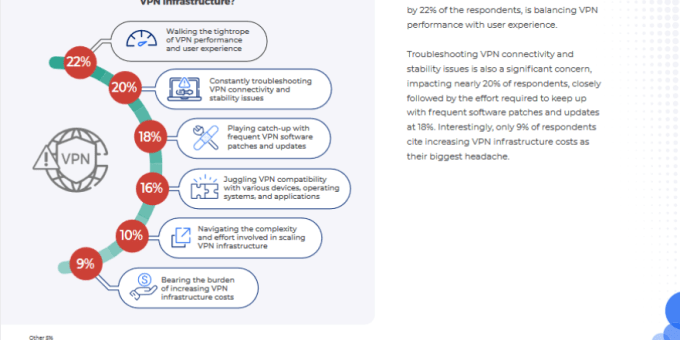
Traditionally, Virtual Private Networks (VPNs) have facilitated basic remote access. The rapid growth in the distributed workforce and increasing adoption of cloud technologies are challenging the basic connectivity that VPN offers. As the threat landscape rapidly evolves, VPNs cannot provide the secure, segmented access organizations need. Instead, VPNs often provide full access to the corporate network, increasing the chances of cyberattacks once bad actors gain access through login credentials. In addition, VPNs connect multiple sites, allow access to third parties, support unmanaged devices, and enable IoT device connectivity. However, these varied use cases stretch VPNs beyond their initial purpose
and design, often creating security gaps in the face of an increasingly complex and changing threat landscape.
This comprehensive report, based on a survey of 382 IT professionals and cybersecurity experts, explores these multifaceted security and user experience challenges. The 2023 VPN Risk Report reveals the complexity of today’s VPN management, user experience issues, vulnerabilities to diverse cyberattacks, and their potential to impair organizations’ broader security posture. The report also outlines more robust security models, with zero trust emerging as a viable option to secure and accelerate digital
transformation.
Included in this Contents
- VPN Vulnerabilities and Cybersecurity Impacts
- VPN Use and User Experience
- Primary Attack Vectors
This article is posted at zscaler.com
Please fill out the form to access the content








